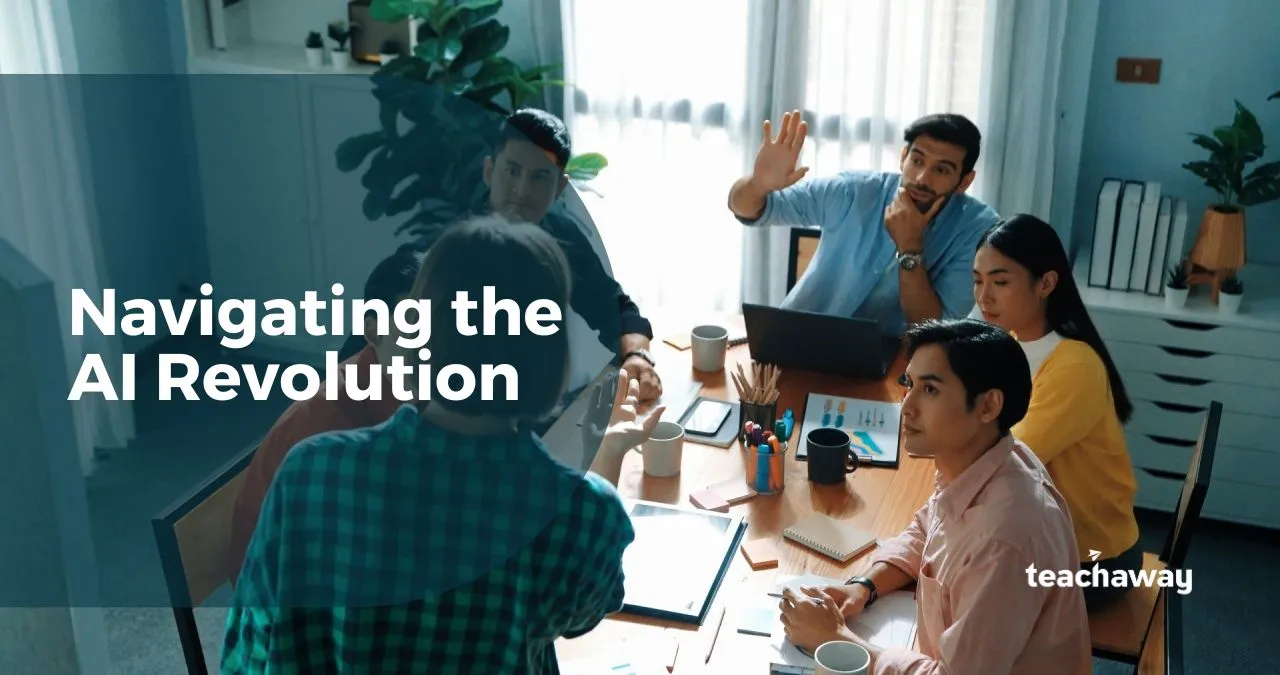As international school leaders, it’s crucial to stay ahead of this technological curve and harness the power of AI to enhance teaching, learning, and administrative processes within our diverse, multicultural communities.
Understanding AI in Education
AI encompasses computer systems capable of performing tasks that typically require human intelligence, such as learning, problem-solving, and decision-making.
In the educational context, AI can be categorized into three main types:
- Reactive AI: Tools that respond to specific inputs or situations without learning from past experiences (e.g., virtual assistants, spell checkers).
- Predictive AI: Tools that analyze data to predict future outcomes or behaviors (e.g., early warning systems, personalized learning platforms).
- Generative AI: Tools that can generate new content or outputs, often creating something novel from learned patterns (e.g., ChatGPT, text and image generators). Generative AI, particularly large language models like ChatGPT, has garnered significant attention due to its potential to revolutionize teaching, learning, and administrative tasks across diverse cultural and linguistic contexts.
Opportunities and Challenges
AI presents both opportunities and challenges for international schools:
Opportunities:
- Personalized learning experiences tailored to diverse student needs and backgrounds
- Automated grading and feedback, reducing workload for educators
- Content creation and lesson planning assistance, supporting multilingual education
- Administrative task automation (e.g., report writing, data analysis)
- Accessibility and language support for students and families
Challenges:
- Ethical concerns (bias, privacy, academic integrity)
- Technological infrastructure and access across different regions
- Teacher training and professional development for a global workforce
- Curriculum integration and pedagogical shifts across diverse educational systems
- Regulatory and policy considerations in different countries
Guiding Principles for School Leaders
As leaders of international schools, you play a pivotal role in shaping your institution’s approach to AI. Here are some guiding principles to consider:
- Develop a strategic vision: Collaborate with stakeholders from diverse backgrounds to develop a clear vision and policies for the responsible and equitable use of AI in your school, considering cultural and linguistic diversity.
- Prioritize ethical considerations: Ensure AI tools are unbiased, respect privacy, and promote academic integrity across cultures. Establish guidelines for appropriate use in a multicultural context.
- Invest in professional development: Provide ongoing training for educators from diverse backgrounds to understand AI’s capabilities, limitations, and pedagogical implications in different educational settings.
- Foster AI literacy: Integrate AI education into the curriculum to equip students with the skills to navigate and critically evaluate AI technologies, considering cultural perspectives.
- Embrace a growth mindset: Encourage a culture of experimentation and continuous learning, recognizing that AI is an evolving field with global implications.
- Collaborate and share best practices: Engage with other international schools, organizations, and experts worldwide to share knowledge and stay updated on AI developments across different regions.
Implementation Strategies
To successfully integrate AI into your school, consider the following strategies:
- Conduct a needs assessment: Identify areas where AI can enhance teaching, learning, and administrative processes, considering the diverse needs of your multicultural community.
- Pilot AI tools: Start with small-scale pilots to evaluate the effectiveness and impact of AI tools across different cultural and linguistic contexts before scaling up.
- Develop guidelines and policies: Establish clear guidelines and policies for the responsible use of AI, addressing issues such as academic integrity, data privacy, and equity, while considering cultural nuances.
- Allocate resources: Ensure adequate funding, infrastructure, and support for AI implementation and ongoing professional development, accounting for potential disparities across regions.
- Foster collaboration: Encourage cross-disciplinary collaboration among educators, IT staff, and administrators from diverse backgrounds to leverage AI effectively in a multicultural setting.
- Continuously evaluate and adapt: Regularly assess the impact of AI on student learning, teaching practices, and school operations across different cultural contexts, and make adjustments as needed.
Shape Schools With The Right Strategy
By embracing AI thoughtfully and strategically, international school leaders can unlock its potential to enhance education while addressing its challenges and ethical considerations within a diverse, global context.
Stay proactive, collaborative, and committed to continuous learning to navigate this rapidly evolving landscape successfully, ensuring that AI benefits students, teachers and future educators, and communities worldwide.
